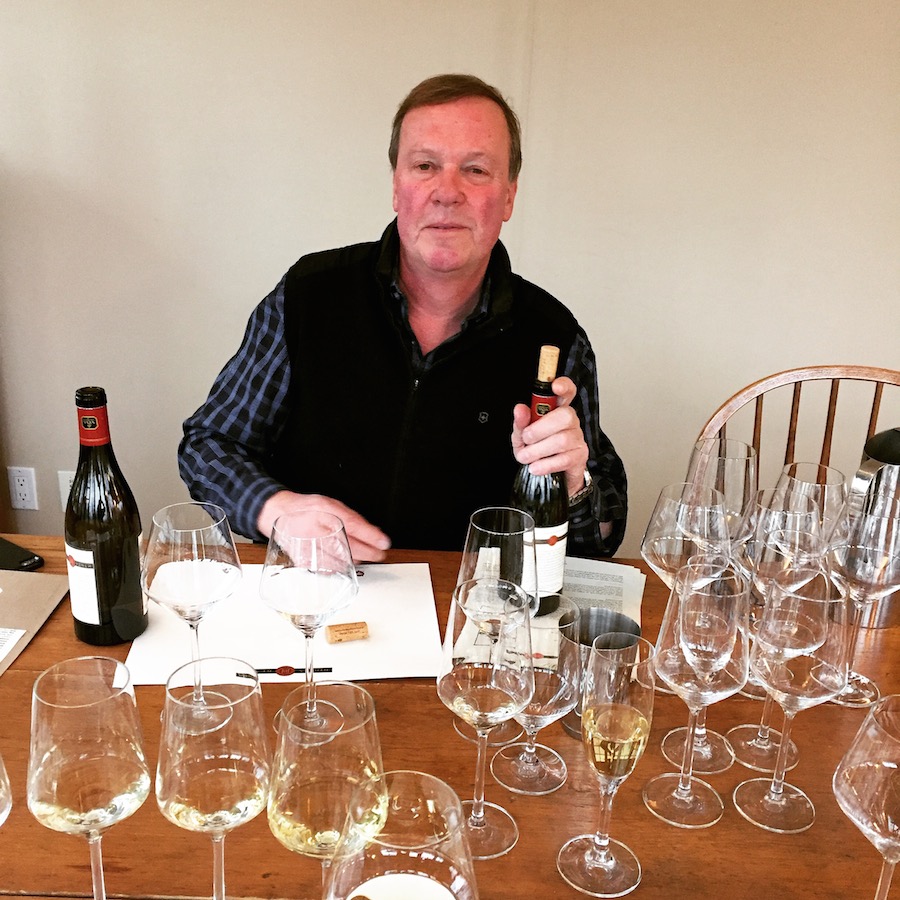
By Rick VanSickle
Niagara Grand Cru. I’m just going to leave that there while you digest it. Heck, while I digest it.
I don’t particularly like the “Grand Cru” term, because it’s not a Niagara term and the entire concept doesn’t make sense here; it’s a French thing, originally the past participle of the verb “croitre” (to grow).
But Niagara needs its own Le Grand Fromage hierarchy; we’re ready to identify the vignerons who respect the terroir of their properties and work inside those boundaries to produce wines that represent that terroir at the highest levels vintage to vintage.
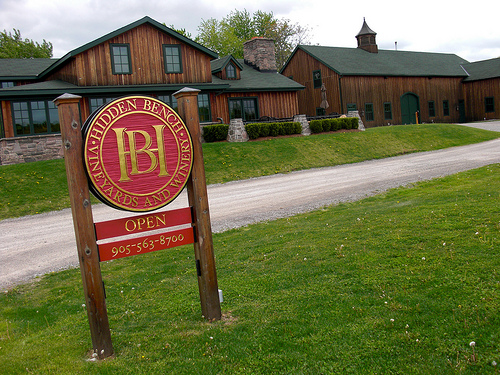
Grand Cru wines (or whatever you want to call them outside of France) are the grandest of all terroirs (and hopefully wines) in any given region, representing a small percentage of the region’s wines (in Burgundy, that is less than 1% of all wines). Of course, there are rules to be followed if you are even to be considered for Grand Cru or, shall we say, “Étoile d’or” status, but those are details that can be worked out.
The most important thing is this: Grand Cru wines are associated with a specifically named and legally defined vineyard or ensemble of vineyards and the vines “which grow on a reputed terroir, and by extension, of good quality.”
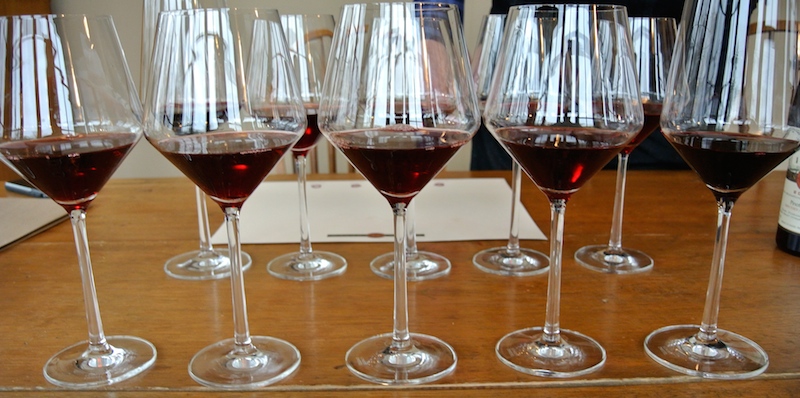
In Bordeaux, the best of the best are referred to as First Growth, Second Growth etc., spread across five growths.
In Niagara, we have no such classification system and no guidelines whatsoever to establish such a system.
But that doesn’t mean we cannot call the wines from a winery of a certain terroir and/or track record within that terroir “Grand Cru.” What is stopping us?
Maybe a hybrid of Burgundy and Bordeaux is what is required to get us going. Afterall, we can’t just make an entire sub-app in Niagara a Grand Cru, it would have to be pockets of vineyards held within a sub-app — a terroir within a terroir — likely held by one winery which consistently shows quality at the highest levels from those terroirs.
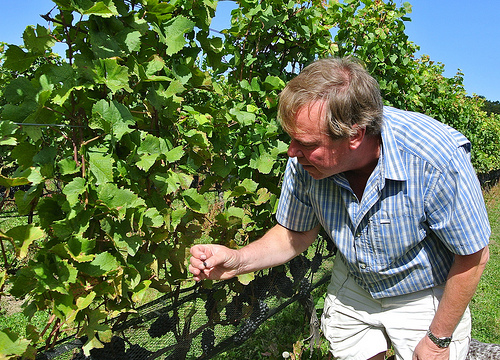
In my mind, we certainly have whatever the Canadian term might be for Grand Cru wineries among us. Yes, it is true. We do have wine from certain wineries that prove vintage after vintage that they are superior to other wines in their sub-appellation and represent fully and completely the terroir from which they are grown — without compromise and without sacrifice.
I am going to piss off a lot of people right now. But I truly believe this.
Hidden Bench on the Beamsville Bench is Niagara’s first “Étoile d’or” winery making wine from “Grand Cru” vineyards.
A bold statement, I know, and I’m ready for the blow back, but I can’t help but believe if there is such a thing as Grand Cru or First Growth or whatever we want to call it here, Hidden Bench, with its certified organic, single vineyard estate wines (three distinct terroirs) and the quality it achieves every vintage in what Niagara does best on the Beamsville Bench (Chardonnay, Pinot Noir and Riesling) then there is no question that this winery has it — in spades.
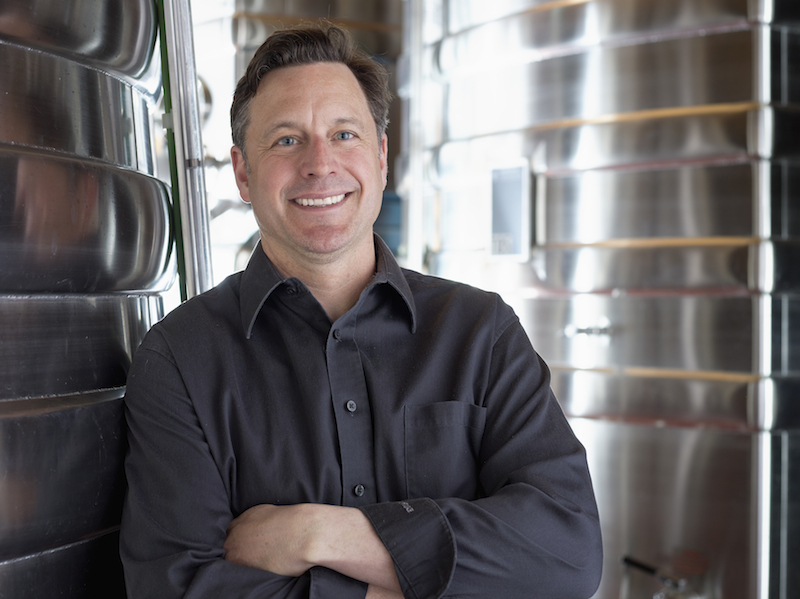
There are no weak links in the lineup from owner Harald Thiel’s complete portfolio, with current releases made by winemaker Marlize Beyers. The wines going forward are made by Jay Johnston (above), who rejoined Hidden Bench as winemaker last year. In fact, the wines just get better with each and every passing vintage. And as they do, he adds to the already stellar lineup. Think sparkling, think rosé, think more single vineyard wines from his already established key vineyards of Felseck, Locust Lane and Rosomel. And then think, at least by his tiering, the grandest of the Grand Crus: Tête de Cuvée Chardonnay, Nuit Blanche (Sauvignon Blanc/Semillon blend) and La Brunante (Bordeaux style red made only in the best vintages).
Thiel has done things right, and argue all you want about whether this is a good financial decision (I do not know the answer, nor do I care), but it is being done exactly the way he wants to do it and, truth be told, consumers are the beneficiaries, hell, all Niagara/Ontario wineries are the beneficiaries when someone carries the torch and runs with it.
This entire point of view was prompted by the soon-to-be-released and new single-vineyard Pinot Noir from Hidden Bench from the Rosomel Vineyard.
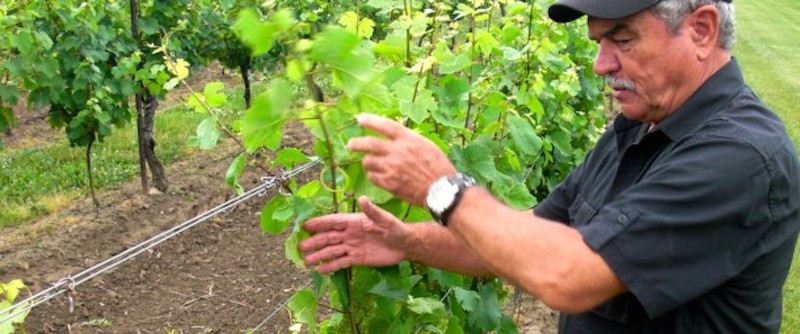
Thiel and his team at Hidden Bench only planted Pinot Noir in the Rosomel Vineyard in 2006 and already that Pinot is an instant Niagara Grand Cru. Previously, the site produced the fruit for the estate’s Nuit Blanche and La Brunante (the top Bordeaux varietal red) as well as the Vieille Vignes Chardonnay and the Roman’s Block Riesling, named in honour of and in homage to the founder of this benchmark vineyard, Roman Prydatkewycz (in above photo).
Now the viticulturist at Vineland Estates Winery, Prydatkewycz sold the vineyard to Thiel in 2004. Wines produced from Rosomel (derived from the names Roman, his wife Sophie and daughter Melanie) were already some of Niagara’s most profound examples of terroir-driven wines. Thiel has taken them further. To wit: the first Rosomel Vineyard Pinot Noir 2015 to be released this spring.
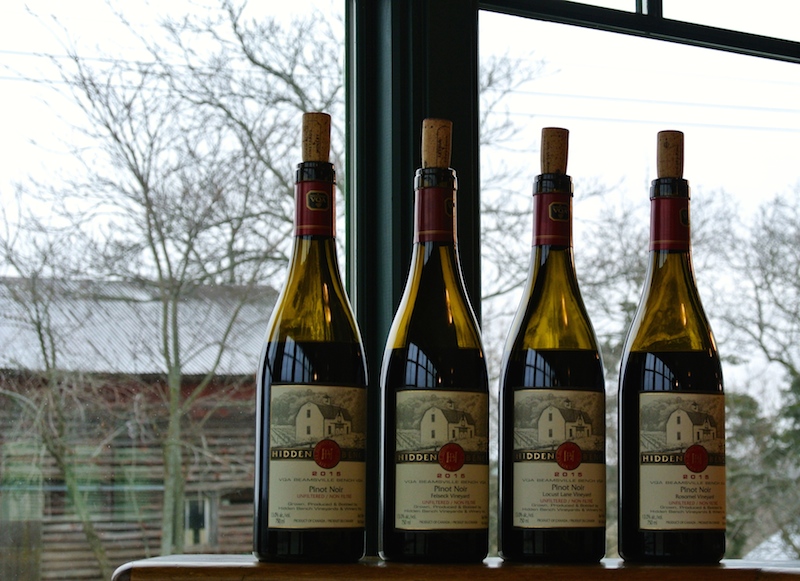
The new Pinot Noir is planted to Clone on 828 on Bravesac rootstock. It joins the other two Pinots from Felseck and Locust Lane vineyards and the “village” Pinot Noir from a blend of estate vineyards.
“When I started Hidden Bench,” Thiel told me as I sat down to taste his new and upcoming releases before Christmas, “this is exactly what I strived for — a ‘village’ wine to go with the single vineyard wines.”
Here’s what I liked from the tasting. It should be noted that I originally published the review of the new Rosomel Vineyard Pinot Noir in the annual Most Thrilling Wines of 2017, but am re-publishing here with additional information.
Reviews are arranged by vineyard, and a good case for Grand Cru status, in my humble opinion.
Rosomel Vineyard
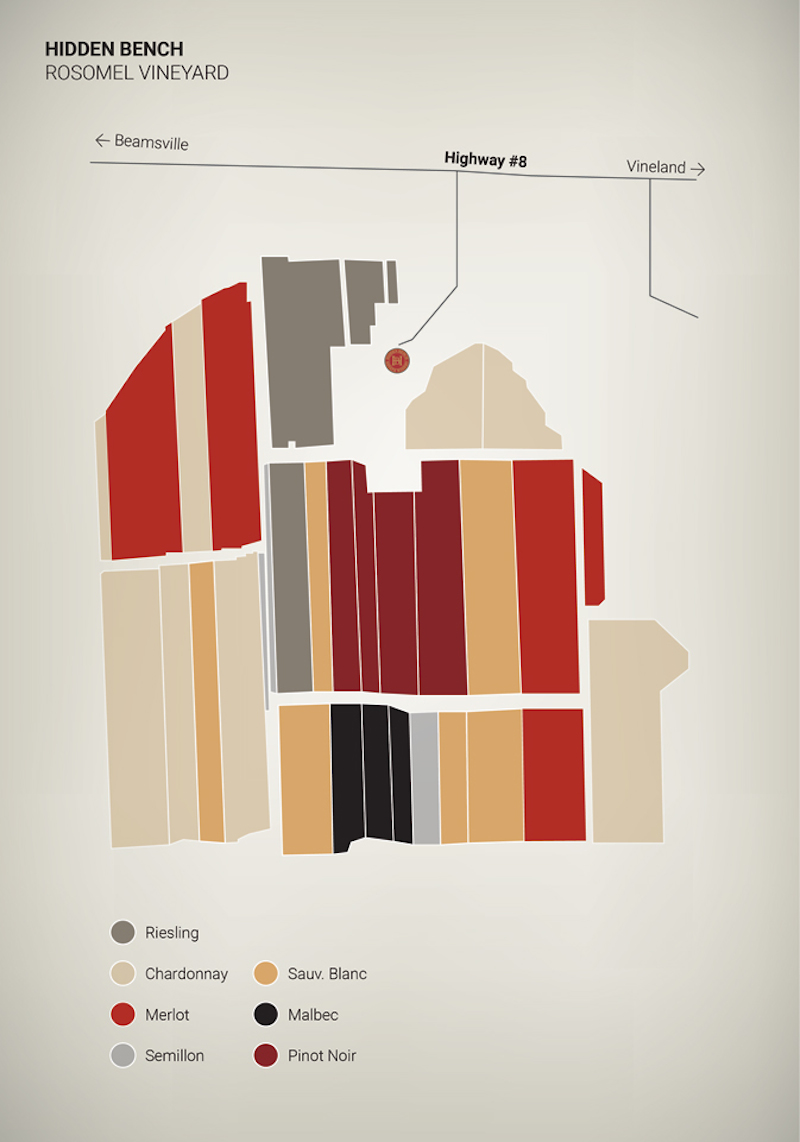
The Rosomel Vineyard is 23 acres situated approximately six km to the east of the winery, on the Beamsville Bench. Originally planted some 40 years ago by Roman Prydatkewycz, this vineyard has consistently produced award-winning wines over the years, including Roman’s Block Riesling, Nuit Blanche, Tête de Cuvée Chardonnay and La Brunante).
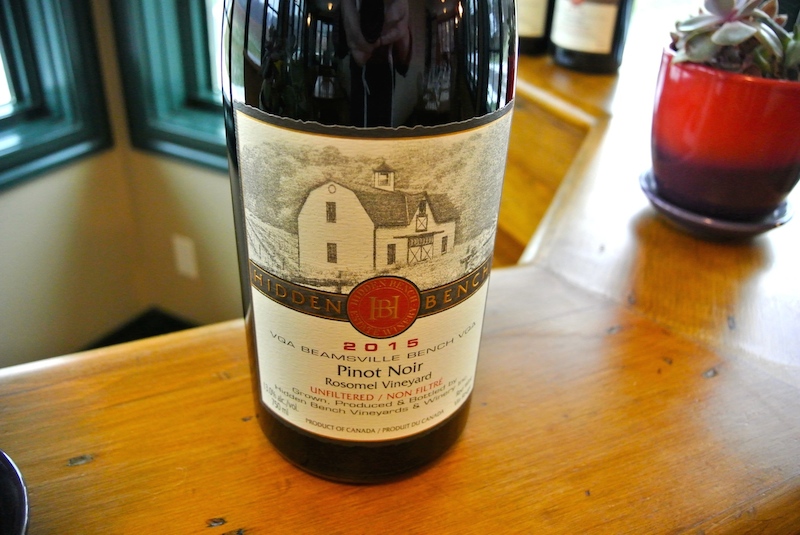
Hidden Bench Rosomel Vineyard Pinot Noir 2015 ($58, spring release, 93 points) — This is the first single-vineyard Pinot Noir bottling from the estate’s Rosomel Vineyard, which, like all Hidden Bench wines, is 100% certified organically. It is such a beautiful and pretty Pinot with a nose of raspberry/bramble, tart cherry, strawberries, perfumed spice notes, and a range of earth and mineral accents. It reveals complexity and structure on the palate with savoury red fruits, plush/ripe tannins, integrated oak spices, and length through the finish. A true beauty that will be quite comfortable in the cellar for 3+ years.
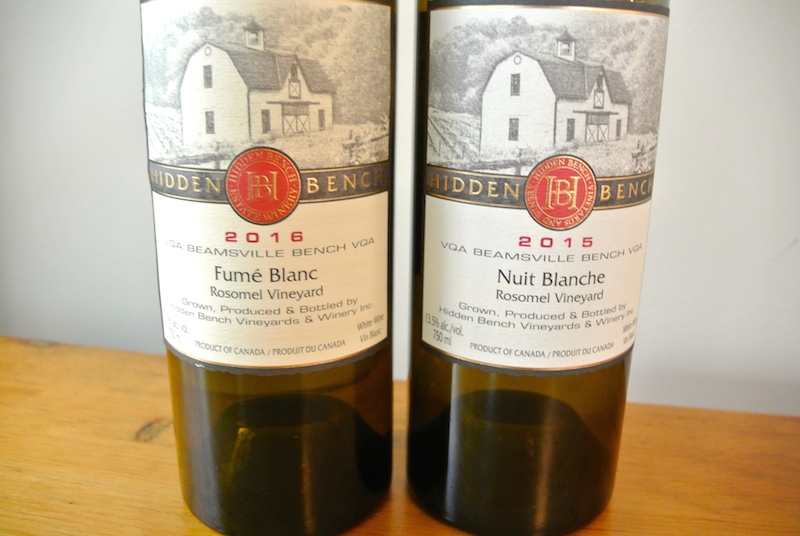
Hidden Bench Nuit Blanche Rosomel Vineyard 2015 ($40, 92 points) — Not many in Niagara are making this serious style of Sauvignon Blanc (and a pinch of Semillon) with oak aging in mostly neutral barrels. It is always one of my favourite white wines made in the region. This has a gorgeous nose of creamy pear, melon, passion fruit, grapefruit, flinty minerality and subtle toasted vanilla and spice. It has a creamy texture on the palate and plenty of vibrancy to lift the ripe tropical fruits, citrus accents and spice notes though a long finish. I would cellar for 2+ years, maybe more.
Hidden Bench Fumé Blanc Rosomel Vineyard 2016 ($28, spring release, 90 points) — This is a barrel-fermented Sauvignon Blanc sourced from younger vines with oak aging in mostly neutral barrels. It is more overt than its big sister above, with expressive gooseberry, grapefruit, herbs and spice. There is freshness on the palate and notes of grapefruit, lemon, tropical fruits, minerals and integrated spice notes. Will be drinking perfectly when released this spring.
Felseck Vineyard
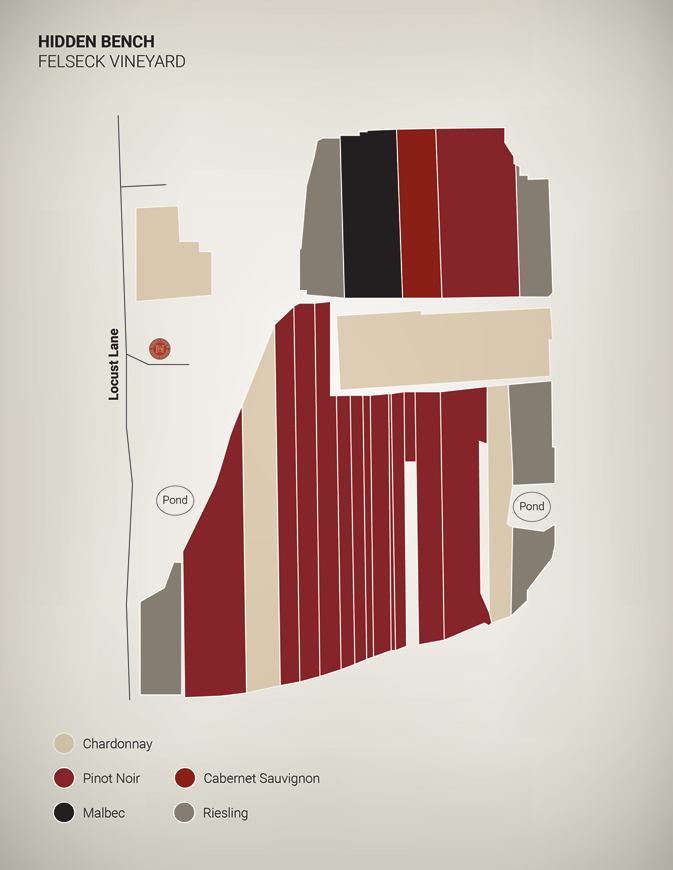
The name Felseck means “corner of the cliff” in German and this vineyard is actually situated where the Niagara Escarpment takes a dramatic turn from an East/West direction to a North/South direction. This vineyard was originally planted in 1992 and was acquired by Hidden Bench in the spring of 2007. The high-density plantings (2,600 vines/acre) are primarily Pinot Noir, Chardonnay and Riesling with a significant East/West and North/South slope, which promotes air drainage and superior solar exposure.
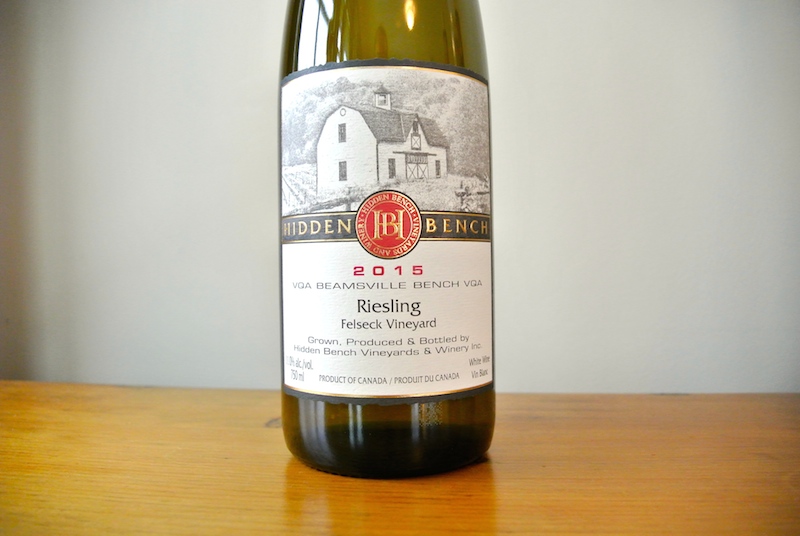
Hidden Bench Felseck Vineyard Riesling 2015 ($28, 91 points) — On the nose, this mineral-laden Riesling shows fresh lime, grapefruit, peach and tropical fruits. It’s dry and fresh on the palate, austere, in fact, with mid-palate weight and lovely citrus rind, fresh-squeezed lime, peach, minerals and a lively, vibrant finish.
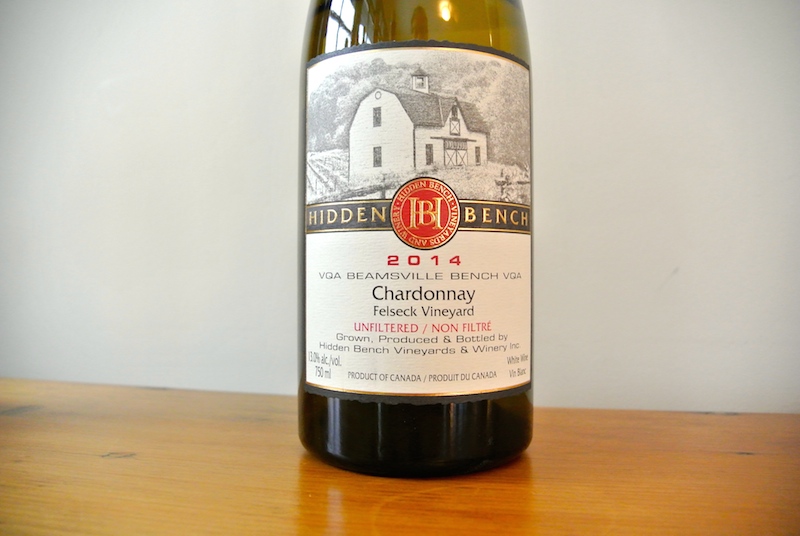
Hidden Bench Felseck Vineyard Chardonnay 2014 ($39, 92 points) — Interesting winemaking here with 100% French oak, 35% new, 25% second fill, 23% concrete egg tanks and the rest neutral for the first nine months and then racked to 32% stainless steel barrels and neutral oak for an additional five months. It’s unfined and unfiltered, like most HB wines are. Such an interesting nose of quince, Mandarin orange flinty minerality, caramel, spice, toasted oak and vanilla. It maintains freshness and vibrancy on the palate with lovely stone fruits, citrus accents, beautiful elegant oak spice notes and that rich vein of minerality that runs through this wine from beginning to end. Lots of cellaring potential here, say 4+ years?
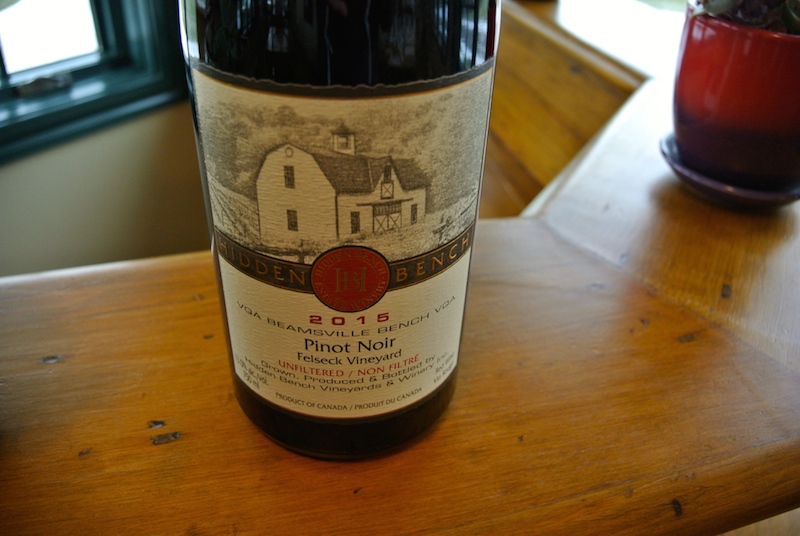
Hidden Bench Felseck Vineyard Pinot Noir 2015 ($39, spring release, 91 points) — A nose of ripe red berries, graphite, red currants and fine elegant spice notes. The palate reveals more savoury notes to go with the basket of red fruits, that tell-tale graphite quality, smooth tannins, and oak spices that are all nicely balanced through the long finish.
Locust Lane Vineyard
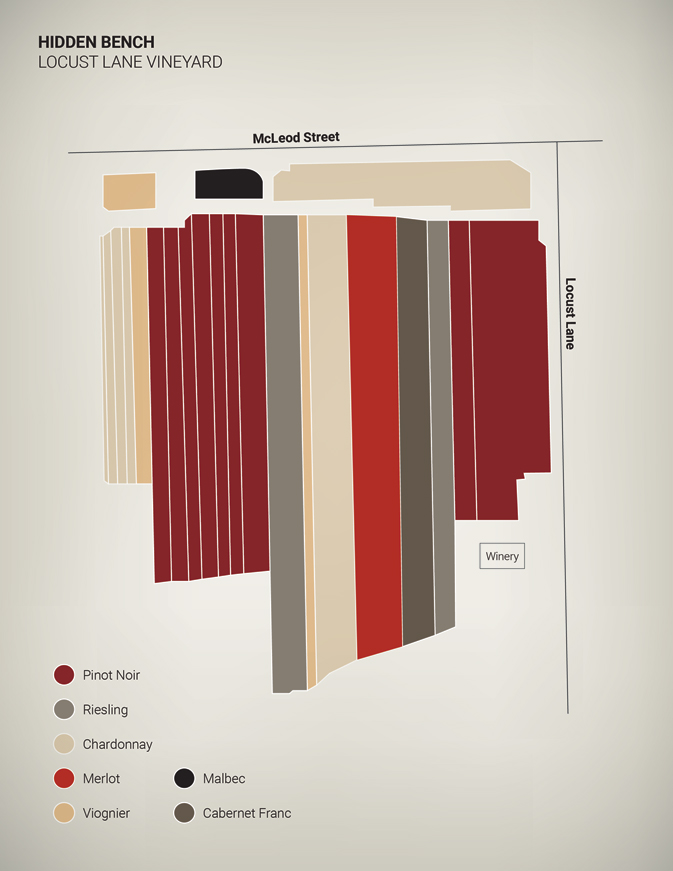
The Locust Lane Vineyard was the first vineyard purchased by Hidden Bench in 2003 and is the location of the winery and, as such, is the home vineyard. This vineyard is unique in that it has both a West/East slope as well as a South/North slope, providing excellent air drainage and solar exposure. Originally planted in 1998, wines from this vineyard have shown a depth of character, with dark fruit and good tannin structure.
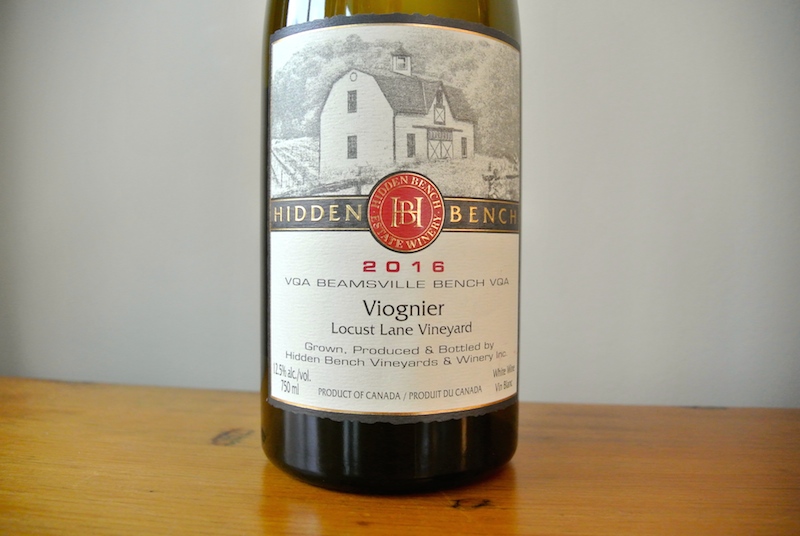
Hidden Bench Locust Lane Vineyard Viognier 2016 ($32, 90 points) — Aged in French oak barrels, all older than 5 years, for four months. So, the idea here is to promote texture and mouth-feel more than spice notes. It’s tight at the moment on the nose with stone fruits, apricots, flinty minerality and a floral component. It has gorgeous mouth-feel and ever so subtle spice notes to go with pear, apple, apricot and creamy/flinty notes on the finish.
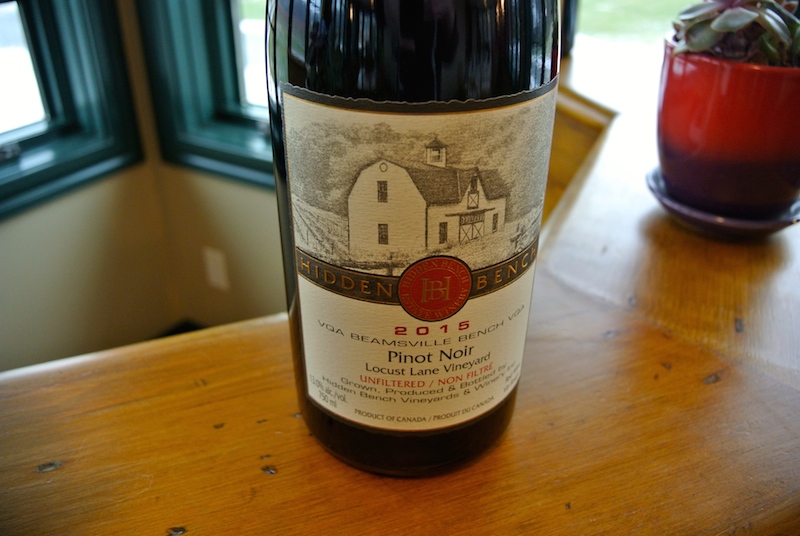
Hidden Bench Locust Lane Vineyard Pinot Noir 2015 ($48, fall release, 92 points) — While Rosomel Vineyard Pinot is more “Old World,” says Thiel, Locust Lane would “please New World wine lovers” with its more masculine profile. Plenty of cherry fruit on the palate, but also a range of earthy dark fruits, rich spice notes and anise/licorice accents. The ripe tannins add structure on the palate with a meaty, dark fruit profile, crunchy raspberry notes with earth, spice and minerals through a complex and long finish. Needs time to harmonize and soften, but will reward with patience.
Estate cuvees
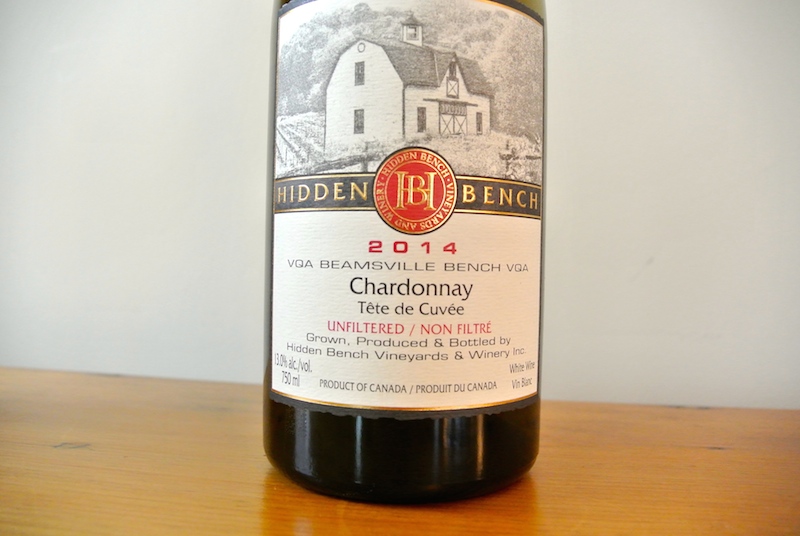
Hidden Bench Tête de Cuvée Chardonnay 2014 ($48, 93 points) — This is a blend of Chardonnay from Locust Lane and Rosomel vineyards and finished unfined and unfiltered. The French oak treatment is 70% year-old barrels and the remaining neutral. This is consistently one of the best Chardonnays produced in Ontario, and a perfect example of the Beamsville Bench style. The nose shows notes of poached pear, baked apple pie, lemon accents, spice and wet-stone minerality. It’s nervy on the palate with mouth-watering acidity, nicely integrated orchard fruits, a touch of citrus, elegant oak accents and minerality through the finish. This is a beautiful wine that will cellar for 5+ years and just get better with time.
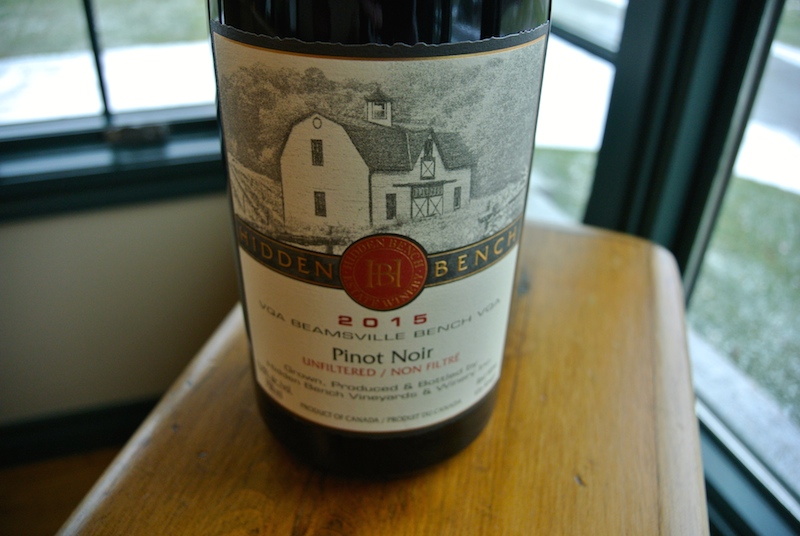
Hidden Bench Estate Pinot Noir 2015 ($32, Vintages Essential, 90 points) — This is a blend of the three estate vineyards and made essentially the same way as the single-vineyard wines with certified organic grapes and finished un-fined and unfiltered. Not sure you will find a better Pinot from anywhere at this price. This Pinot has a lovely nose of cherry/raspberry, plums and savoury spices. It has structure on the palate and a complex array of red fruits, savoury spice notes and a vein of minerality from start to finish. Just a brilliant, well-priced Pinot Noir.
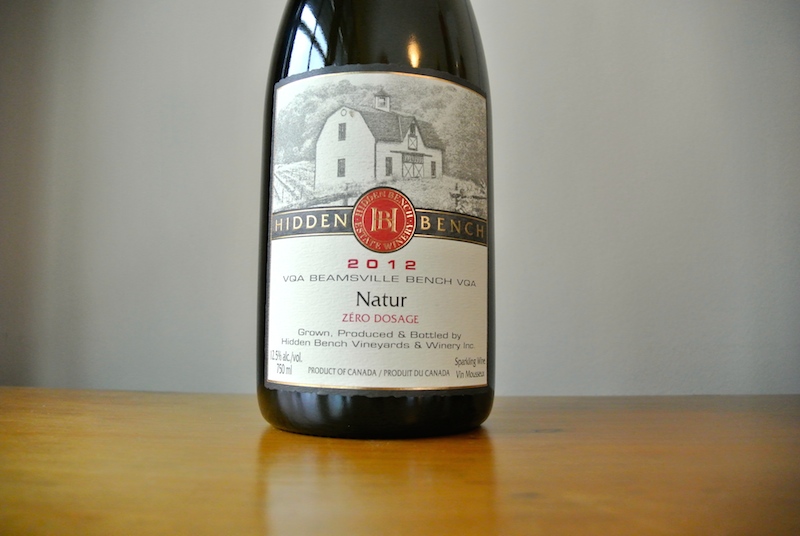
Hidden Bench Natur Zero Dosage 2012 ($45, 92 points) — The Pinot Noir (69%) and Chardonnay (31%) for this traditionally made sparkling blend is sourced from the estate’s Locust and Felseck Vineyards. The blend spends seven months on lees in the barrel and 49 months of the lees in bottle. No sugar (zero dosage) is added to the finished wine, so a bone-dry expression of Beamsville Bench bubbles. In the glass, a fine and delicate mousse gives way to fresh and vigorous notes of lemon, citrus, green apple, stony minerality and light toasted accents. It is beautifully dry and fresh on the palate with an array of citrus, apple and minerals that pop through an energetic and persistent finish. Drinking really nice right now, but will get better as it gains fat in the bottle. Stuff a couple away for a year or two.






Harald Thiel and the team at HB are showing the way to excellence in Canadian wine production, making it a philosophy of creating greatness out of what nature has to offer…Bravo!
Hidden Bench has become my absolute favourite. Their attention to detail is apparent in their wines. My girlfriends and took a tour and really enjoyed ourselves. All the staff were very friendly which make for a great day.
Look at the Grand Cru system in Switzerland. Estates that only value the best and follow a strict “cahier des charges” can be GC.